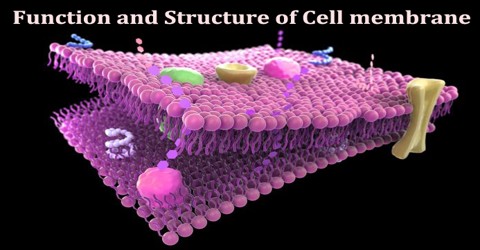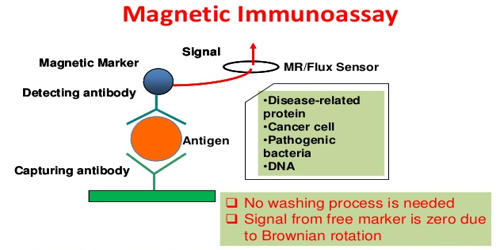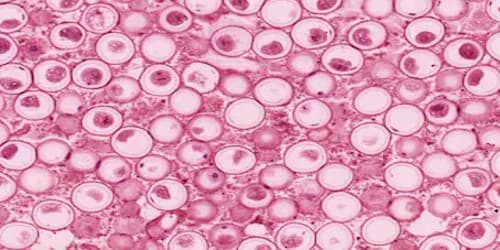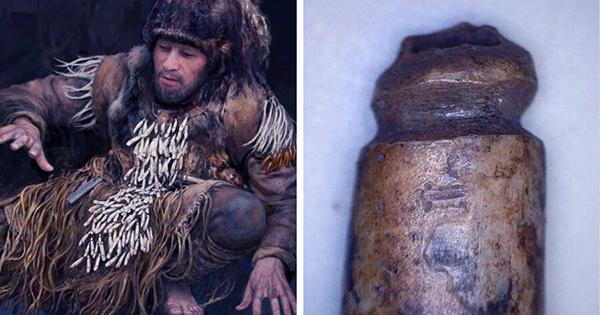Function and Structure of Cell membrane
Definition of Cell membrane
A Cell membrane is a thin semi-permeable membrane that surrounds the cytoplasm of a cell, enclosing its contents. The membrane also gives a cell its shape and enables the cell to attach to other cells, forming tissues. The cell membrane also serves as a base of attachment for the cytoskeleton in some organisms and the cell wall in others. Thus, it helps to support the cell and maintain its shape. The cell membrane is selectively permeable to ions and organic molecules and controls the movement of substances in and out of cells. The basic function of the cell membrane is to protect the cell from its surroundings.
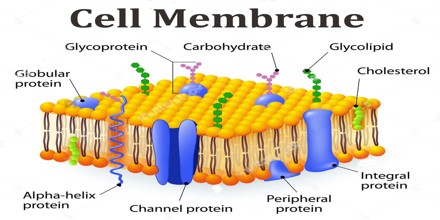
The Cell membrane is primarily composed of a mix of proteins and lipids. While lipids help to give membranes their flexibility, proteins monitor and maintain the cell’s chemical climate and assist in the transfer of molecules across the membrane.
The cell membrane is a selectively permeable membrane that is composed of hydrophilic heads and hydrophobic tails. This allows the membrane to form a lipid bilayer. The cell membrane is also embedded with cell membrane proteins. These proteins float in the bilayer and allow other solutes to enter and exit the cell. These proteins also act as messengers to the cell by binding to objects outside of the cell and transferring a message to the cell’s nucleus.
The Cell membranes are involved in a variety of cellular processes such as cell adhesion, ion conductivity and cell signalling and serve as the attachment surface for several extracellular structures, including the cell wall, glycocalyx, and intracellular cytoskeleton. Cell membranes can be artificially reassembled.
Functions of Cell membranes
A cell membrane protects the structures within the cell. Cell membranes are semipermeable, meaning that only certain objects are able to pass through them. Cell membranes also give shape to the cell and support its structure.
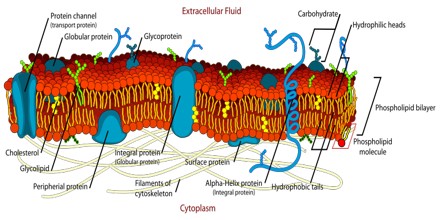
Some functions of the cell membrane are:
- To maintain the physical integrity of the cell – that is to mechanically enclose the contents of the cell, and also
- To control the movement of particles e.g. ions or molecules, into and out of the cell.
- The cell membrane maintains the physical integrity of the cell. It’s most obvious in the cases of animal cells (because they don’t have cell walls) that the cell membrane holds the cell together by enclosing the cytoplasm and organelles within it.
- The cell membrane forms a barrier between the inside of the cell and the environment outside the cell – enclosing cytoplasm and any organelles within the cell, and enabling different chemical environments to exist on each side of the cell membrane.
- The cell membrane physically separates the intracellular components (e.g. organelles in eukaryotic cells) from the extracellular environment. The cell membrane protects the cell from some harmful chemicals in its external environment.
- It also protects the cell from loss of useful biological macromolecules held within the cell by its plasma membrane.

- The cell membranes that enclose cells (inside the cell wall in the cases of plant cells and prokaryotic cells) are selectively permeable. That is, the structure of these membranes is such that they allow certain particles, incl. e.g. molecules, – but not others – to pass through the membrane, hence into or out of the cell.
- Endocytosis is the process in which cells absorb molecules by engulfing them. The plasma membrane creates a small deformation inward, called an invagination, in which the substance to be transported is captured. Endocytosis is a pathway for internalizing solid particles (“cell eating” or phagocytosis), small molecules and ions (“cell drinking” or pinocytosis), and macromolecules. Endocytosis requires energy and is thus a form of active transport.
- Proteins and lipids make up the composition of a cell membrane. There are three different types of proteins found within a cell membrane: structural protein, transport protein and glycoprotein. These support cell structure and shape, move molecules through the membrane and transmit signals between cells.
- Cell membranes often include receptor sites for interaction with specific biochemicals such as certain hormones, neurotransmitters and immune proteins. In this way the cell can recognize and process some signals received from the extracellular environment.
Structures of Cell membranes
The cell membrane is primarily composed of a mix of proteins and lipids. Depending on the membrane’s location and role in the body, lipids can make up anywhere from 20 to 80 percent of the membrane, with the remainder being proteins. While lipids help to give membranes their flexibility, proteins monitor and maintain the cell`s chemical climate and assist in the transfer of molecules across the membrane.

The Cell Membrane is a Fluid Mosaic: A cell is the basic unit of life, and all organisms are made up of one or many cells. One of the things that all cells have in common is a cell membrane. It is a barrier that separates a cell from its surrounding environment. It is composed of four different types of molecules:
- Phospholipids
- Cholesterol
- Proteins
- Carbohydrates
The fluid mosaic model describes the structure of a cell membrane. It indicates that the cell membrane is not solid. It is flexible and has a similar consistency to vegetable oil, so all the individual molecules are just floating in a fluid medium, and they are all capable of moving sideways within the cell membrane.
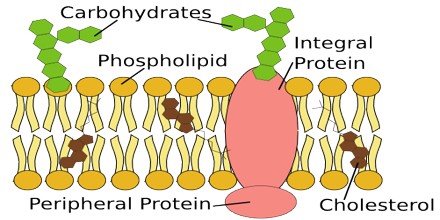
Phospholipids: Phospholipids are a major component of cell membranes. Phospholipids form a lipid bilayer in which their hydrophillic (attracted to water) head areas spontaneously arrange to face the aqueous cytosol and the extracellular fluid, while their hydrophobic (repelled by water) tail areas face away from the cytosol and extracellular fluid. The lipid bilayer is semi-permeable, allowing only certain molecules to diffuse across the membrane.
Cholesterol: Cholesterol is another lipid component of animal cell membranes. Cholesterol molecules are selectively dispersed between membrane phospholipids. This helps to keep cell membranes from becoming stiff by preventing phospholipids from being too closely packed together. Cholesterol is not found in the membranes of plant cells.
Glycolipids: Glycolipids are located on cell membrane surfaces and have a carbohydrate sugar chain attached to them. They help the cell to recognize other cells of the body.
Carbohydrates: Carbohydrates, or sugars, are sometimes found attached to proteins or lipids on the outside of a cell membrane. That is, they are only found on the extracellular side of a cell membrane. Together, these carbohydrates form the glycocalyx.
Cell Membrane Proteins: The cell membrane contains two types of associated proteins. Peripheral membrane proteins are exterior to and connected to the membrane by interactions with other proteins. Integral membrane proteins are inserted into the membrane and most pass through the membrane. Portions of these transmembrane proteins are exposed on both sides of the membrane. Cell membrane proteins have a number of different functions. Structural proteins help to give the cell support and shape. Cell membrane receptor proteins help cells communicate with their external environment through the use of hormones, neurotransmitters, and other signaling molecules. Transport proteins, such as globular proteins, transport molecules across cell membranes through facilitated diffusion. Glycoproteins have a carbohydrate chain attached to them. They are embedded in the cell membrane and help in cell to cell communications and molecule transport across the membrane.
